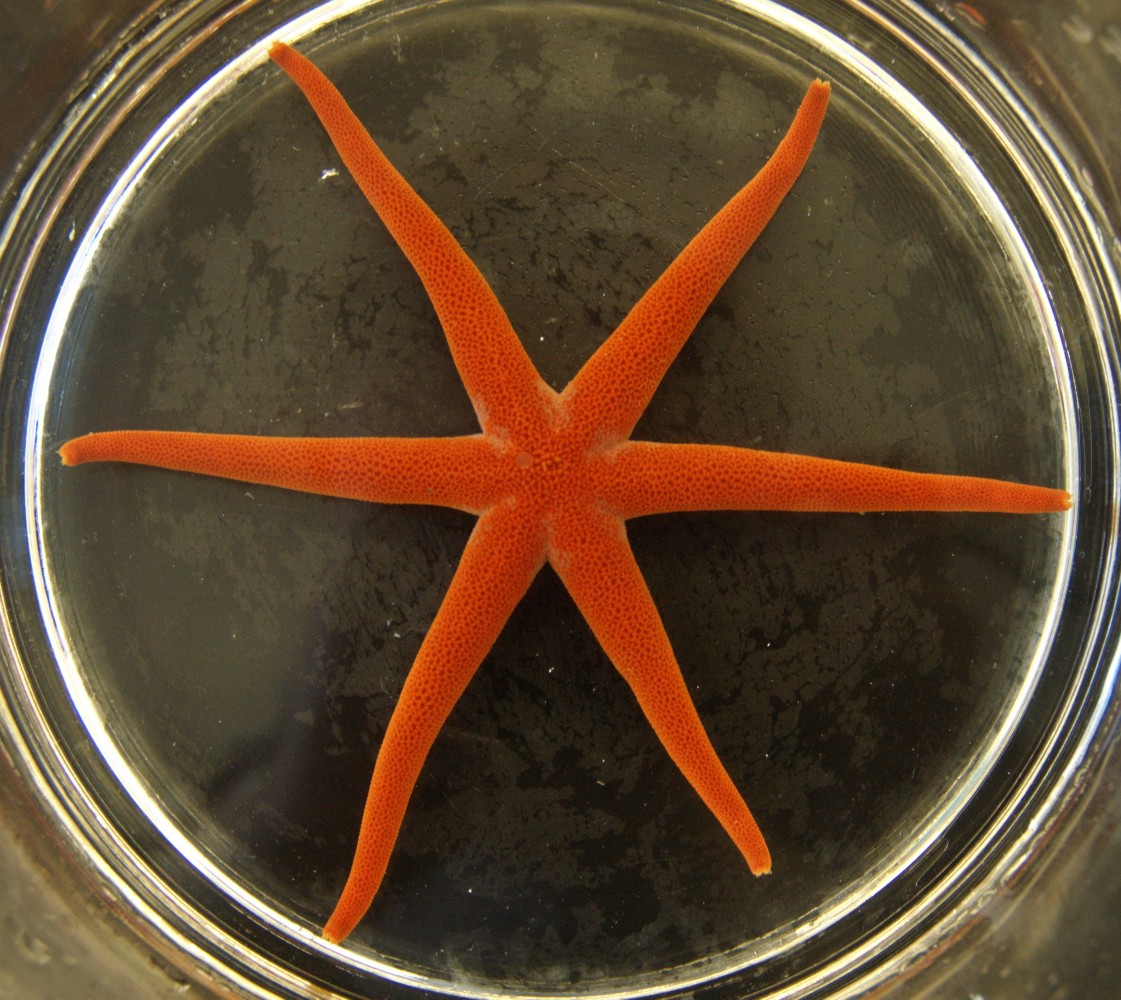Henricia leviuscula (Stimpson, 1857)Common name(s): Blood star, Pacific blood star |
|
| Synonyms: Linckia leviuscula |  |
| Phylum Echinodermata
Class Asteroidea Order Spinulosida Suborder Leptognathina Family Echinasteridae |
|
| Henricia leviuscula, collected from 100-150 m depth in San Juan Channel | |
| (Photo by: Dave Cowles, July 2005) | |
How to Distinguish from Similar Species: This species is variable and is likely a species complex. H. sanguinolenta has no prominent marginal plates and the rays are thickened at the base, forming creases between them. Henricia pumila is a small species with genital pores slightly oral to the margin of the disk and is a mottled color.
In 2010 Douglas Eernisse, M. Strathmann, E.Corstorphine, R. Clark, and C. Mah were working on a key to distinguish species in this complex.
Geographical Range: Aleutian Islands, AK to Baja California, Mexico; Japan
Depth Range: Low intertidal to 671 m
Habitat: Common in the rocky intertidal and subtidally in rocky and shelly hash areas.
Biology/Natural History: Feeds mainly on sponges, or on particulates which stick to mucus on the body surface and are passed to the mouth. Often has a commensal scaleworm, Arctonoe vittata. Small females may brood their young in winter (or the brooders may be a separate species--this is most likely the correct interpretation). Has ocelli at the tips of the rays.
Henricia leviuscula is fairly stiff with only small papulae and tube feet. It seems to rely much more on seawater uptake through the madreporite than does Leptasterias hexactis, another intertidal species of similar size (Ferguson, 1994).
The genus Henricia
is closely related to the genus Echinaster
(Medeiros-Lopes et al., 2016)
| Return to: | |||
| Main Page | Alphabetic Index | Systematic Index | Glossary |
References:
Dichotomous Keys:Kozloff 1987, 1996
Smith and Carlton, 1975
General References:
Brusca
and Brusca, 1978
Harbo,
1999
Kozloff,
1993
McConnaughey
and McConnaughey, 1985
Niesen,
1994
Niesen,
1997
O'Clair
and O'Clair, 1998
Ricketts
et al., 1993
Sept,
1999
Snyderman,
1988
Scientific Articles:
Ferguson, John C., 1994. Madreporite inflow of seawater to maintain body fluids in five species of starfish. pp. 285-289 in Bruno David, Alain Guille, Jean-Pierre Feral, and Michel Roux (eds). Echinoderms through time. Balkema, Rotterdam.
Knott, K. Emily, and Gregory A. Wray, 2000. Controversy and consensus
in Asteroid systematics: new insights to Ordinal and Familial
relationships. American Zoologist 40:3 pp. 382-392
McEdward, Larry R. and Benjamin G. Miner, 2006. Estimation and interpretation of egg provisioning in marine invertebrates. Integrative and Comparative Biology 46:3 pp 224-232
Medeiros-Lopes, Elinia, Rocio Perez-Portela, Paulo Cesar Paiva, and Carlos Renato Rezende Ventura, 2016. The molecular phylogeny of the sea star Echinaster (Asteroidea: Echinasteridae) provides insights for genus taxonomy. Invertebrate Biology 135:3 pp 235-244
General Notes and Observations: Locations, abundances, unusual behaviors:

This species is found in many sizes and colors, and may be a species
complex. Photo by Dave Cowles, July 2005
 |
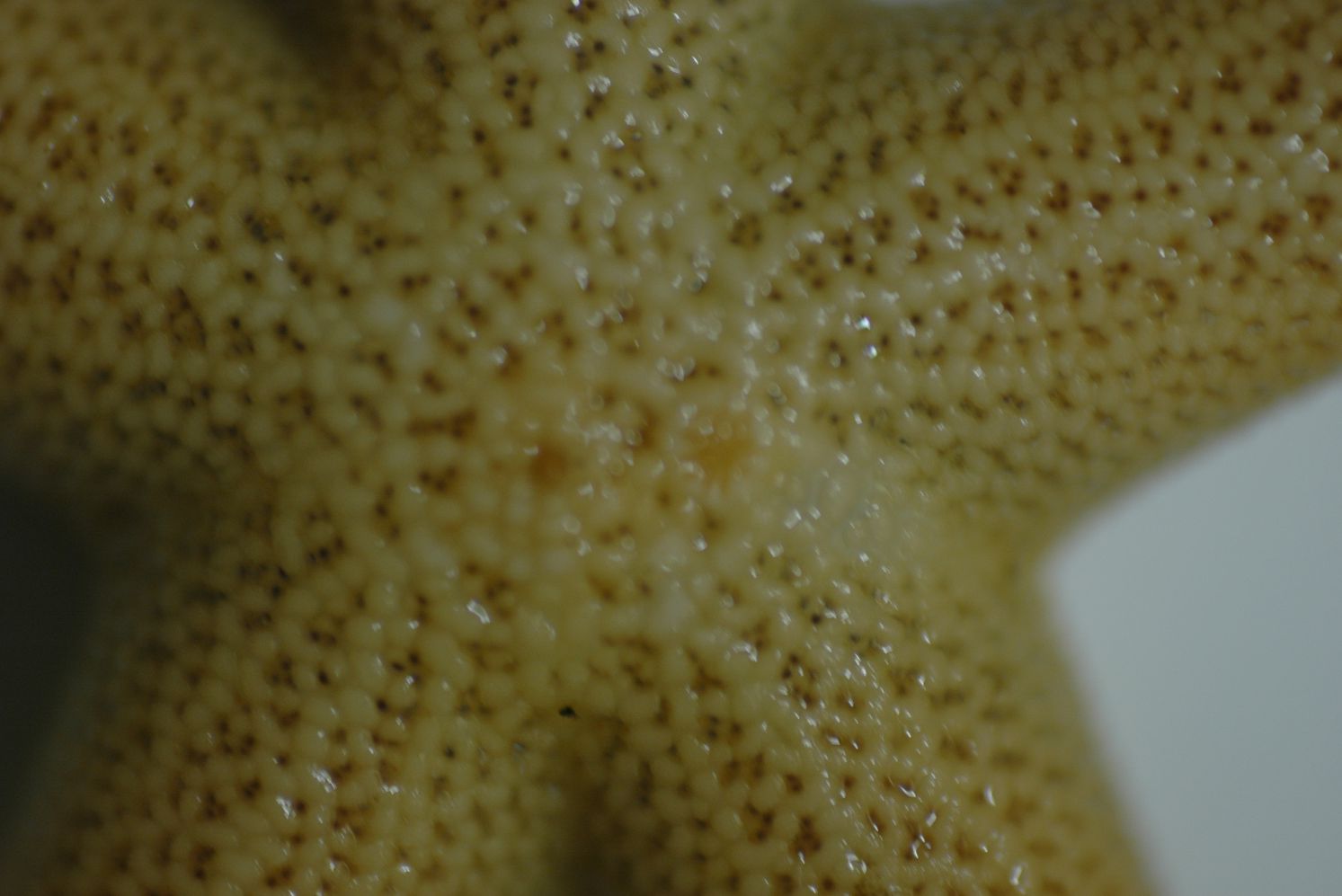 |
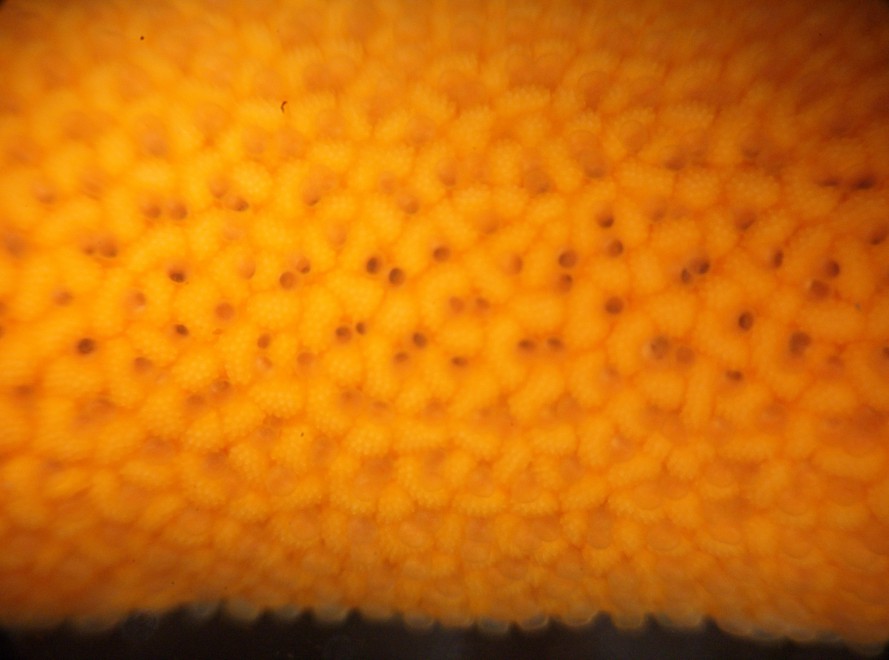
A closeup view of the aboral
ossicles.
This
photo was taken on the 4-rayed seastar below.
Compare the pattern of these aboral
ossicles
to that in
Henricia
pumila.
This closeup of the aboral
portion of a ray
in another
individual shows that the aboral
ossicles
have about
30-60 closely-spaced spinelets. Photo by Dave Cowles, August
2015
This view of the oral
side of a ray
shows that
the adambulacral
ossicles
each have two rows of 5-12 stubby spinelets arranged transversely
to the ambulacral
groove.

This large individual, with ray
length from 11.5 to 12.5 cm, has only 4 rays
and not a hint of another ray
regenerating. It is much larger than most intertidal H.
leviuscula.
This individual, found on Sares Head in 2012, had 6 rays. Ray length 7 cm.
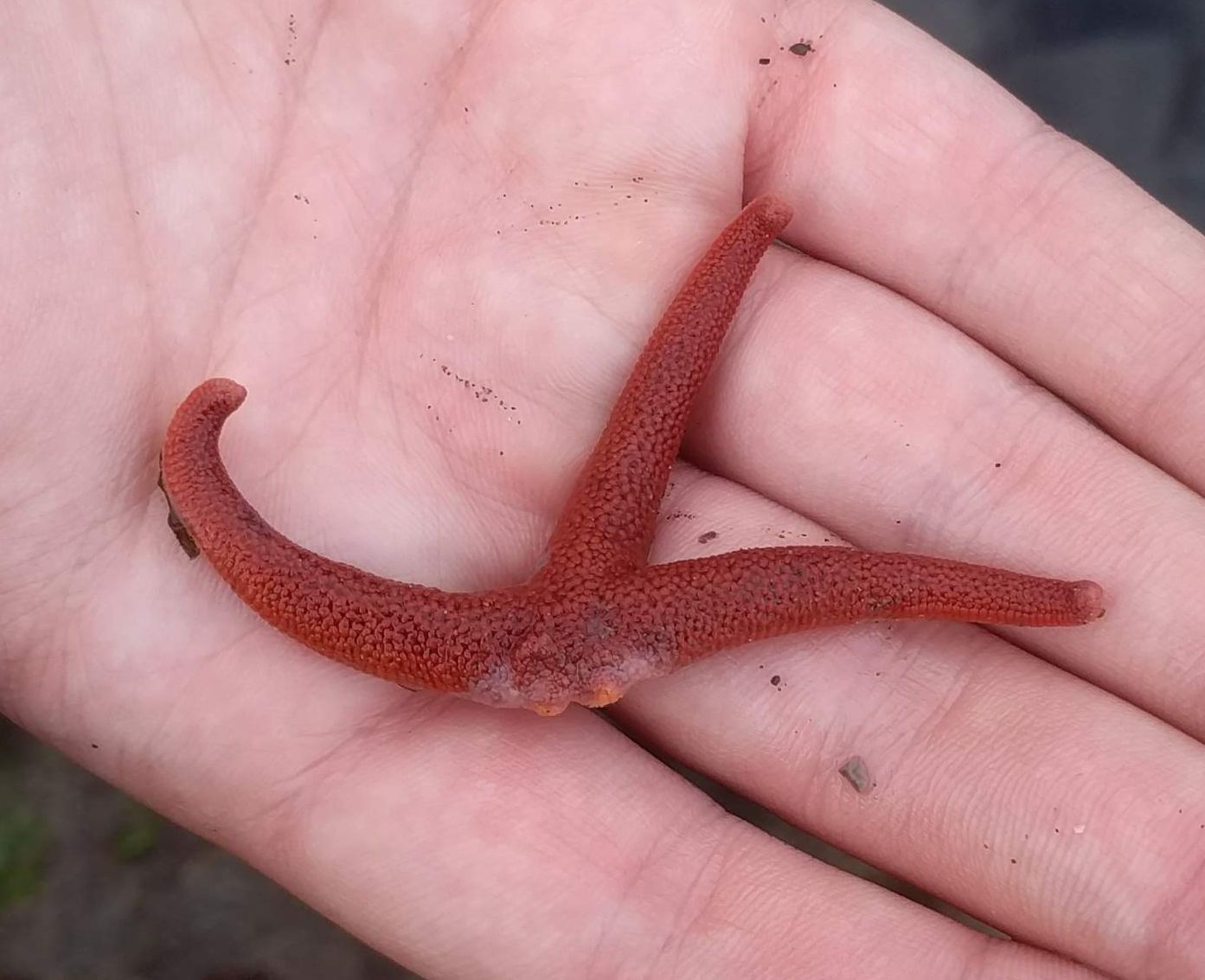
This individual, found at Kalaloch Beach #4 in July 2019, is just beginning to regenerate two arms (rays). In my observation, Henricia was the seastar species least affected by wasting disease along our coast. Photo by Dave Cowles
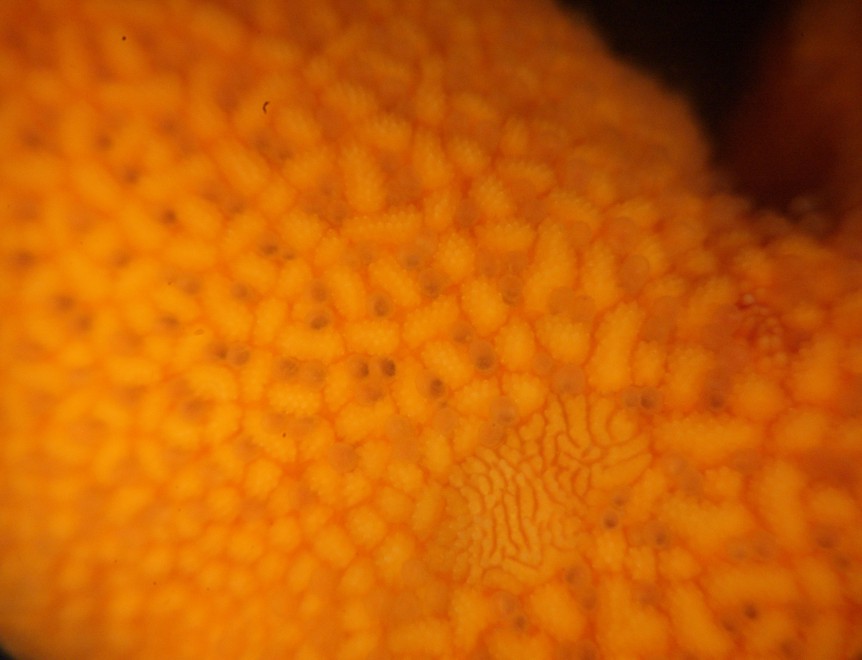
The madreporite
of the 4-rayed
individual
above is orange and not strongly distinguished from the ossicles
around it.
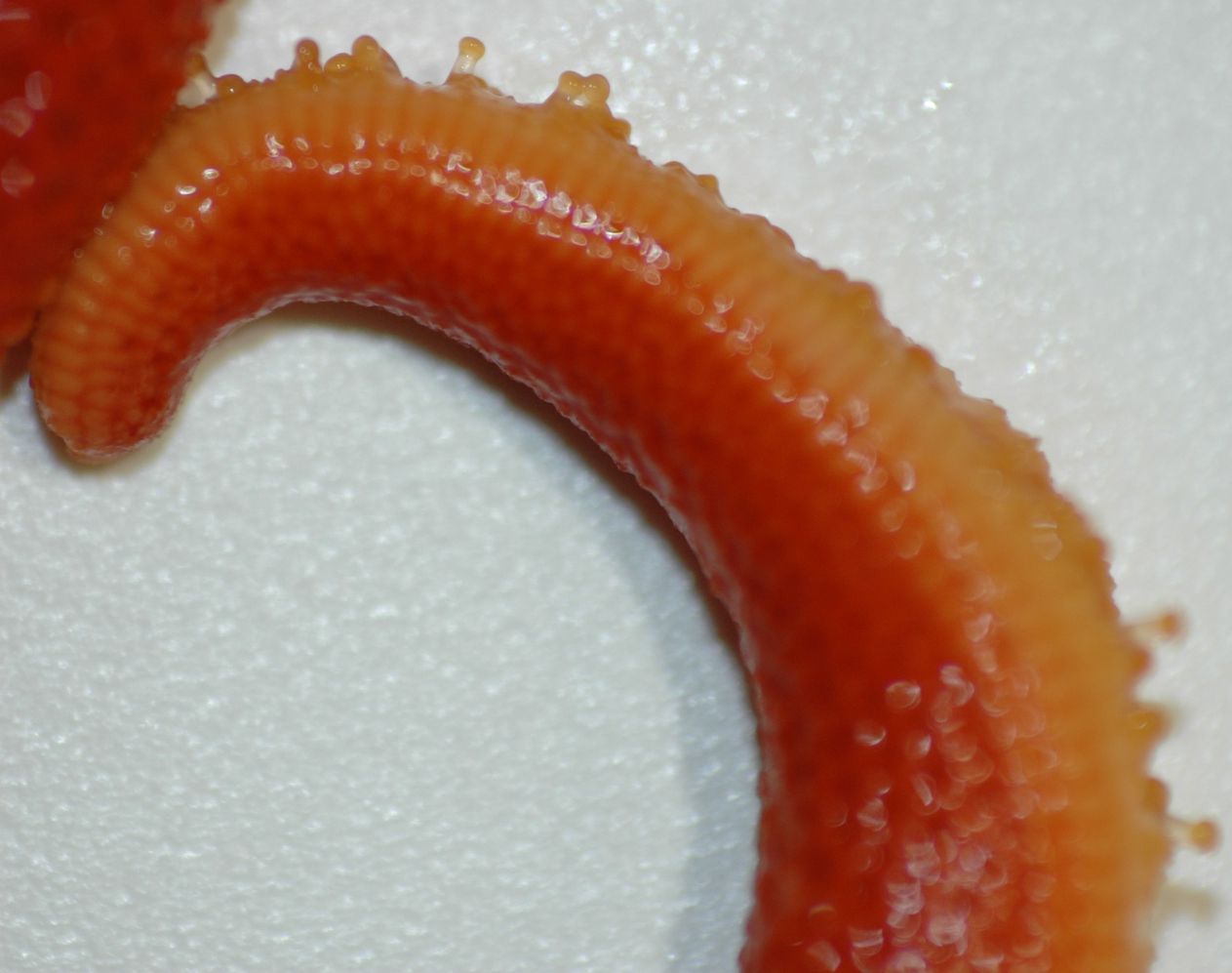
The ossicles
along
the margin of the ambulacral
grooves are larger, usually lighter, and form 3 rows.
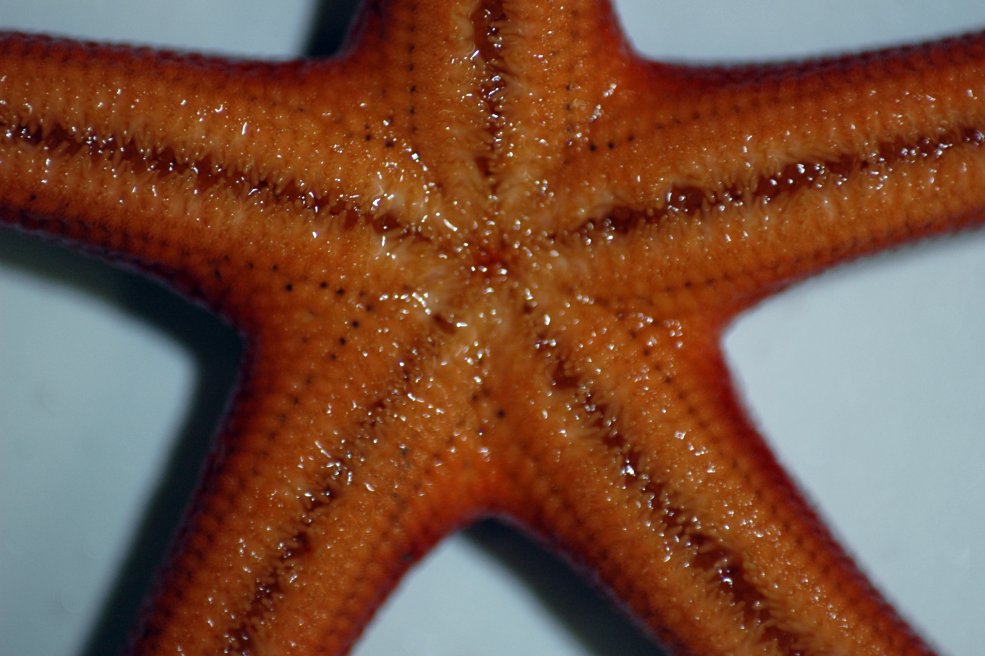
The ambulacral
groove is narrow. Here the enlarged marginal
ossicles can also be seen. Photo by Dave Cowles,
July 2005

A beige form is especially common in deep water. This is
probably
actually H. sanguinolenta. Collected at
100-150 m in San Juan
Channel. Photo by Dave Cowles, July 2005
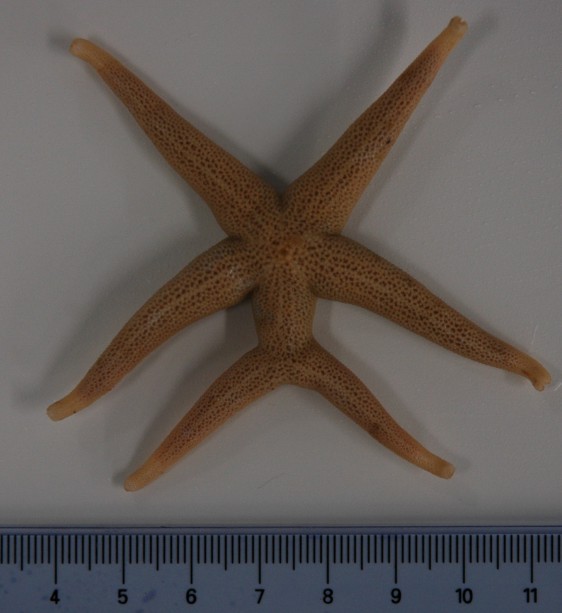 |
 |

A saddle-like marking of lilac blotches between the rays
is a common color variant. This may also be a separate
species from
H.
leviuscula. Collected at 100-150 m depth,San Juan
Channel.
Photo by Dave Cowles, July 2005
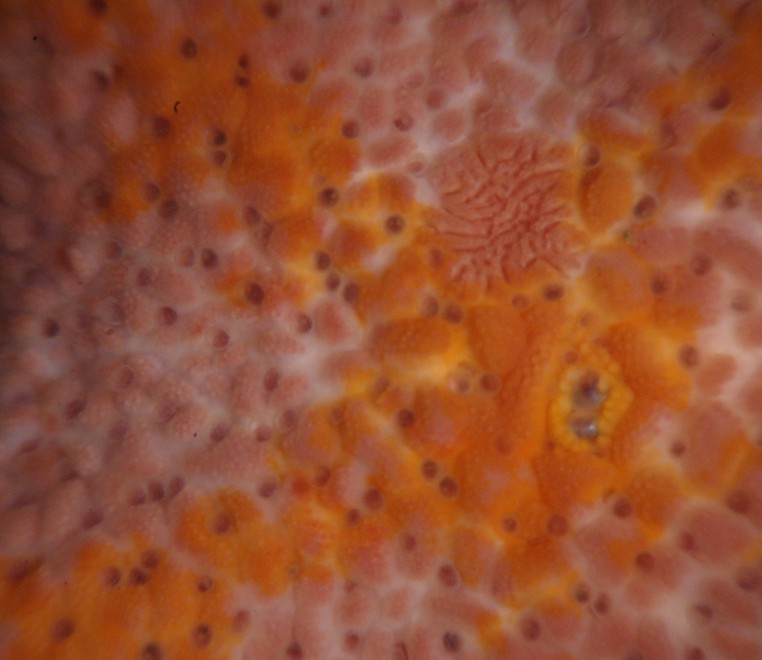
This closeup of the madreporite
of a saddled or blotched individual shows that the madreporite
looks different than in the orange individuals.
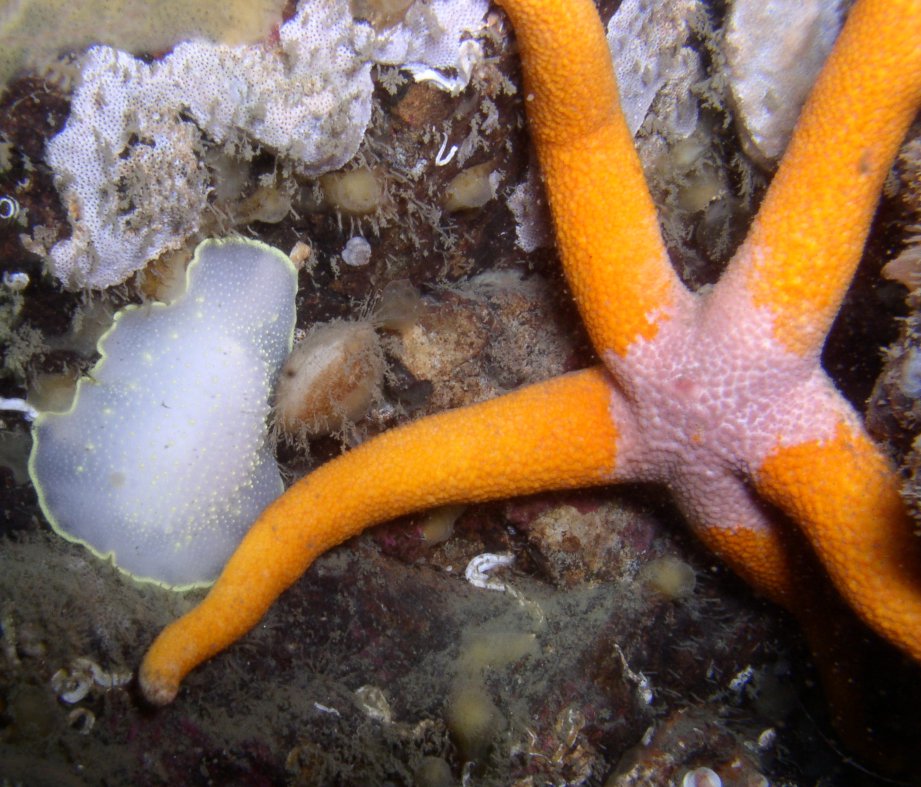
This individual, photographed underwater by Kirt Onthank near Northwest
island in February 2006, has even more pronounced lilac patches over
the
base of the rays
and the
central
disk.
The nudibranch is Cadlina
luteomarginata.
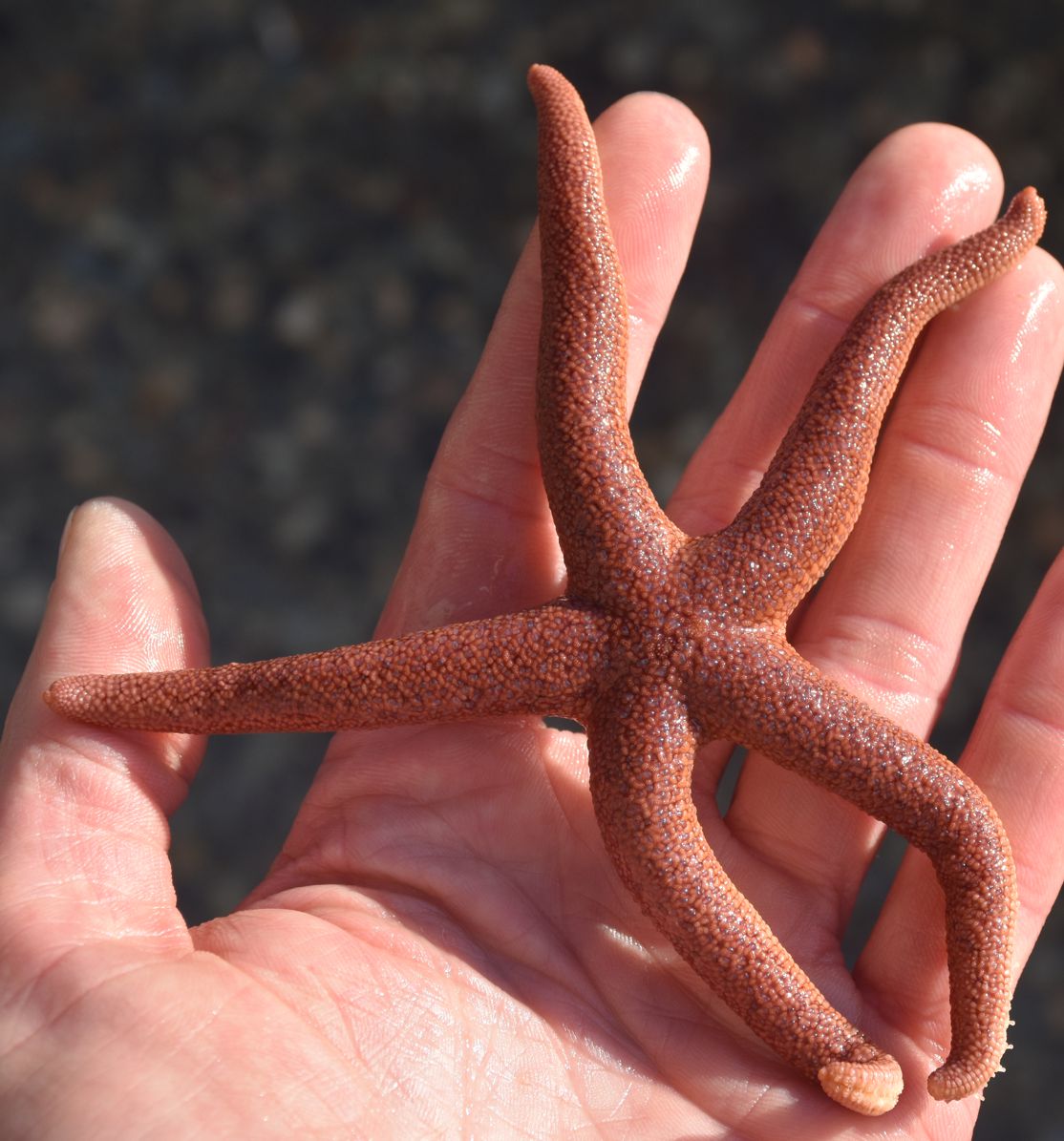 | 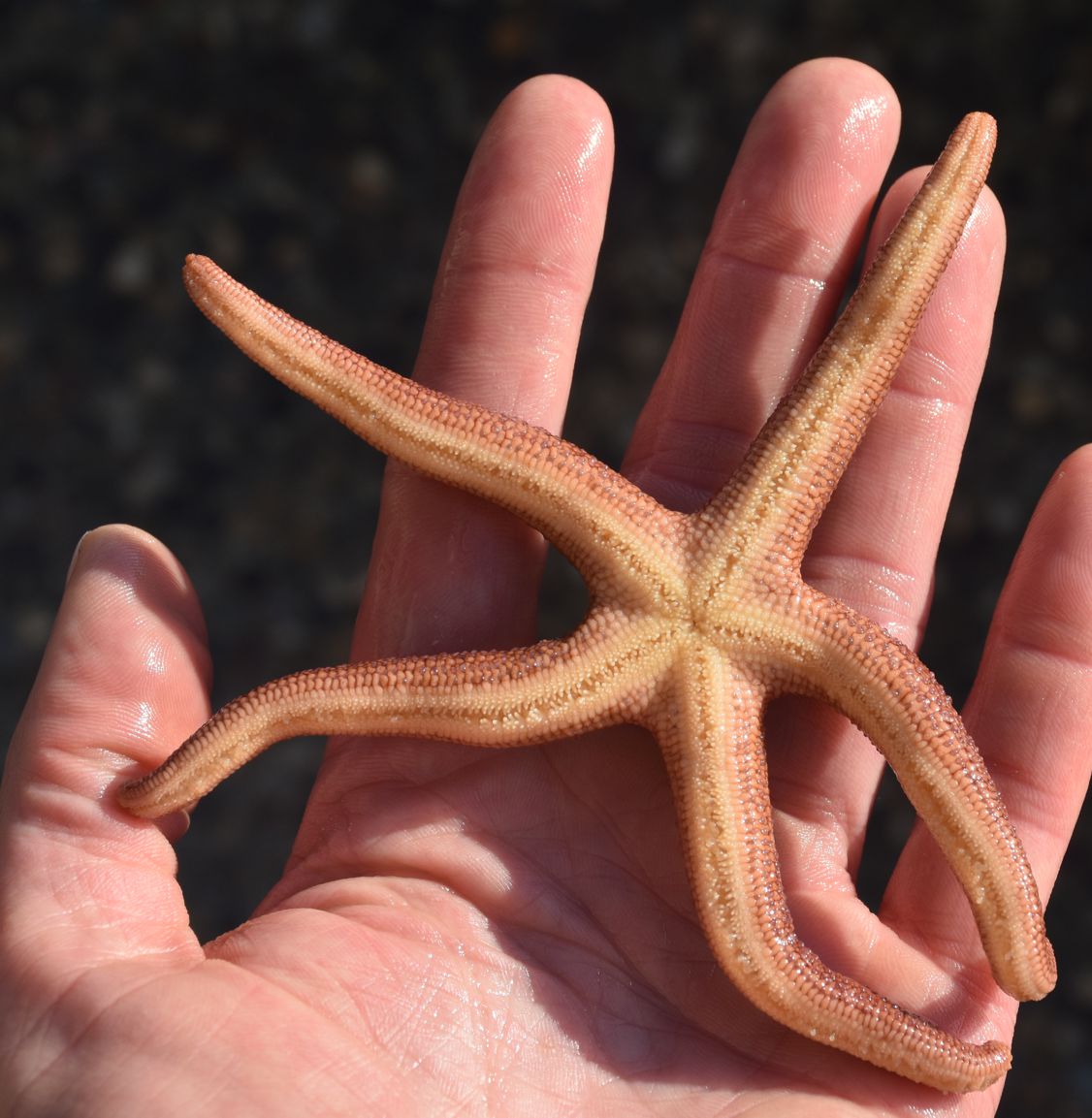 |
| This individual is an interesting flesh color. Phot by Dave Cowles 2019 | |
In summer 2005 three students, Shannon Greenlaw, Jill
Interlichia, and
Lyndi Hetterle did a student research project titled "Nocturnal vs
diurnal
levels of activity in Henricia leviuscula.
They placed 15
blood stars in an outdoor tank and placed a video time-lapse camera
overhead
to record their movement. They found that the seastars moved
significantly
more during the day than at night. They were not able to
determine
whether this was a natural level of movement or whether the seastars
were
searching for shelter from the sunlight, though a number of stars
continued
substantial levels of movement even after entering the shade.
The
figure below of mean distance moved as a function of time of day
summarizes
their data. Daylight hours are from approximately 6:00 to
21:30.
Authors and Editors of Page:
Dave Cowles (2005): Created original page
